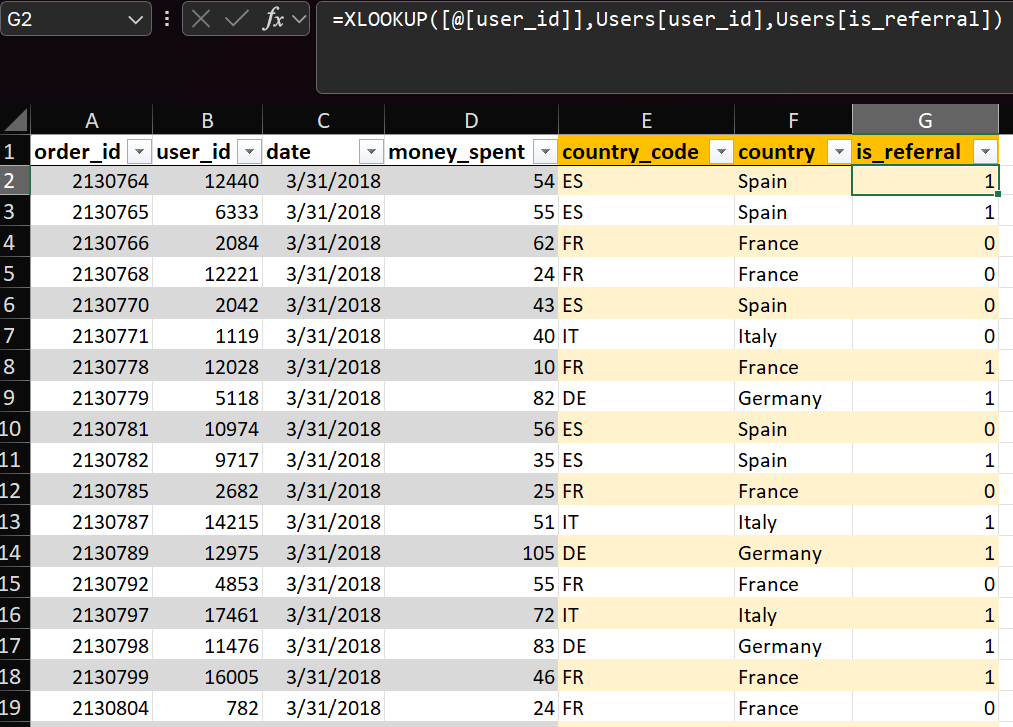
excel
During Summer 2025, I joined the Global Career Accelerator, where I sharpened my Excel skills working with real-world data with a focus on data analysis.
Through hands-on projects and working with real datasets, I learned how to use Excel not just as a spreadsheet tool—but as a powerful platform for uncovering insights. Below are workbooks that shows some of the key functions and techniques I found most valuable in my data analysis work.
OneDrive of my Excel Workbooks: Excel Workbooks
A/B Testing for H&M Promotional Emails
I analyzed an A/B test comparing two subject lines to determine which one led to higher email open rates for H&M’s promotional campaign.
Tools & Skills Used
Excel Functions: A/B testing calculator
Techniques: Experimental group comparison, conversion rate analysis, statistical interpretation.
Skills Demonstrated: A/B testing logic, data-driven decision-making, campaign performance evaluation
Key Takeaways
The test subject line ("Your last chance to score 20% off + free shipping") had a slightly higher open rate than the control group’s version, suggesting urgency may improve engagement.
Open rates were close enough that statistical significance needed to be evaluated to confirm effectiveness.
This project helped me understand how to balance open rate improvements with potential trade-offs, like customer fatigue or reduced conversions, and how to make recommendations based on data.

Each row represents an email sent. The dataset includes the group (control or test), the subject line, and a binary value for whether it was opened. This formed the foundation of the analysis.

Using a PivotTable, I summarized the number of emails sent and opened for each group. Control group: 836 opens out of 4764 (18%) Test group: 894 opens out of 4673 (19%) The test subject line slightly outperformed the control.

I used Statsig to calculate how large my sample needed to be to detect an 11% improvement from a baseline open rate of 18%, ensuring the analysis had sufficient power and statistical validity.

Final statistical analysis showed Test B (test group) converted 10% better than the control and reached 98% statistical confidence, confirming that the difference in open rates was significant.
Analyzing the ASICS Referral Campaign
I evaluated the effectiveness of a referral campaign for ASICS by comparing spending behavior between referral and non-referral users across multiple countries. I explored whether referral users generated more value and if the campaign was worth continuing.
Tools & Skills Used
Excel Functions: XLOOKUP and PivotTables
Techniques: Data cleaning, calculated columns, conditional logic, data validation
Skills Demonstrated: Data cleaning, country-level comparisons, performance reporting
Key Takeaways
Referral users spent slightly more per order on average than non-referral users, with Spain showing the highest referral participation.
Countries like Germany and France had higher order counts but varied in per-user spend.
Excel helped uncover subtle patterns that wouldn't be obvious in raw data alone, such as identifying that referral campaigns may drive higher initial interest but not always long-term value.

This table includes individual user IDs, their country, and whether they signed up through the referral campaign (is_referral). It served as the lookup base for enriching the orders dataset.

Using XLOOKUP, I pulled referral information into the orders table by matching user_id from the orders dataset to the user table. This allowed me to analyze how referred users behaved across different regions.

I created a PivotTable to calculate the average money_spent per country, filtered to show only referral users. Germany had the highest average among referred users, while France had the highest number of transactions.
